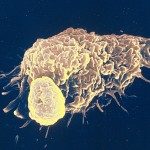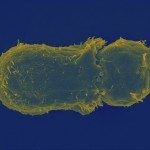Link to Pubmed [PMID] – 11514605
J. Exp. Med. 2001 Aug;194(4):491-505
After stimulation of the T cell receptor (TCR), the tyrosine residues 292 and 315 in interdomain B of the protein tyrosine kinase ZAP-70 become phosphorylated and plausibly function as docking sites for Cbl and Vav1, respectively. The two latter proteins have been suggested to serve as substrates for ZAP-70 and to fine-tune its function. To address the role of these residues in T cell development and in the function of primary T cells, we have generated mice that express ZAP-70 molecules with Tyr to Phe substitution at position 292 (Y292F) or 315 (Y315F). When analyzed in a sensitized TCR transgenic background, the ZAP-70 Y315F mutation reduced the rate of positive selection and delayed the occurrence of negative selection. Furthermore, this mutation unexpectedly affected the constitutive levels of the CD3-zeta p21 phosphoisoform. Conversely, the ZAP-70 Y292F mutation upregulated proximal events in TCR signaling and allowed more T cells to produce interleukin 2 and interferon gamma in response to a given dose of antigen. The observation that ZAP-70 Y292F T cells have a slower rate of ligand-induced TCR downmodulation suggests that Y292 is likely involved in regulating the duration activated TCR reside at the cell surface. Furthermore, we showed that Y292 and Y315 are dispensable for the TCR-induced tyrosine phosphorylation of Cbl and Vav1, respectively. Therefore, other molecules present in the TCR signaling cassette act as additional adaptors for Cbl and Vav1. The present in vivo analyses extend previous data based on transformed T cell lines and suggest that residue Y292 plays a role in attenuation of TCR signaling, whereas residue Y315 enhances ZAP-70 function.


